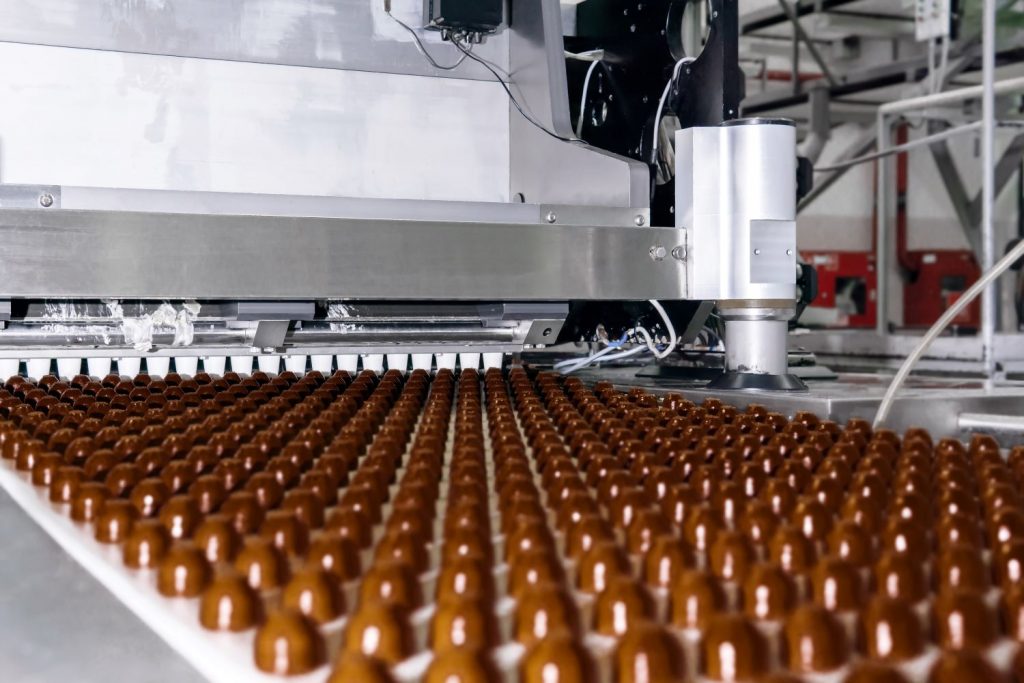
When packaging fast-moving goods, the changeover is crucial and critical at the same time. It is a form of planned downtime between product batches due to a change in format or product packaging. It is essential in the Confectionery sector, sensitive to seasonal production and consequent peaks in periods such as Easter and Christmas. Confectionery is also influenced by fast-moving dynamics, as consumers request ever-changing types of products and packaging. This translates into a challenge for the supply chain because quicker changeover reduces idle time and increases line efficiency. So, let’s have a look at the eight tips to minimize changeover time in the confectionery industry.
1) Plan in advance
The planning phase begins much earlier than the production workflow itself and is very important to meet production targets in the Confectionery market, which more and more often requires the production of a great variety of products in smaller batches. For brands in this business, this means organizing the production flow as rationally and efficiently as possible while forecasting peak phases.
2) Look for continuous improvement
This process should not only consider macro-periods such as Christmas or Easter but even daily needs. For example, contract packagers usually package different products on the same line in a limited time span. Careful planning should consider aspects such as different product formats as well as their features. For example, chocolates of different types and shapes may need different packaging materials or maybe more or less delicate.

3) Find the right methods
Changeover needs careful, efficient planning: first of all, it is necessary to analyze the process to understand how to improve it. Several methods can help, such as “SMED” – Single-Minute Exchange of Die, a lean production method that standardizes the procedures as much as possible through work instructions: the most effective way to reduce changeover times and train new employees. The method is based on practical observation, meaning that the procedures are analyzed and divided according to the various steps of changeover. It is essential to keep timing under control by monitoring the time every single procedure takes, such as product size adjustment of the conveyor and the exchange of size parts in the machine during format change.
4) Identify and optimize internal and external activities
It is essential to classify internal and external activities. The former can be carried out when the machines are off only – for example, the replacement of a group or a gear. The latter can be carried out while the machines are on, without interrupting the production. For example, transferring a product from one area to another, or preparing all necessary tools for changeover. Using everyday technology can be useful too: smartphones, tablets, and other devices may prove essential assets to keep track of all the steps in the process and record each phase with precision.
Once the process has been recorded, analyzed, and standardized, improvements can begin to take place. One of the strategies is converting internal activities into external ones while, at the same time, optimizing both phases. For example, data analysis may highlight that the settings used by the operators of a production shift are optimal and should be adopted by all the others. The basic principle is to tend to constant improvement, not only by enhancing the procedures but also by using state-of-the-art systems.
5) The importance of the right partner
Many manufacturers offer automated packaging machines that can work on different formats, with changeover time reduced to a few minutes. Relying on efficient solutions for packaging and processing is invaluable, and so are the phases of handling and line transportation. A well-designed line is essential to forecast the idle times that are necessary to re-set the production and work in a predictive manner.
That’s why it is important to choose technology partners who are not just system providers but have specific know-how of the automation sector, particularly regarding Confectionery and products that are processed and packaged. Products such as chocolate, for example, are sensitive towards environmental conditions such as temperature or humidity: it is essential to take these aspects into consideration during production idle times to prepare changeover.
6) Invest in automation: different tools, same purpose
Using pucks, pallets, and guide rail components are all valid tools to help minimize changeover time, lower the percentage of rejected goods, and enhance downstream hygiene and line washability. Pucks are useful since they work as carriers that stabilize products on the conveyor line, allowing operators to switch products without having to make any adjustments to the transport system. Guide rails and guide rail brackets guide the products and make it possible to accommodate many different product sizes and shapes: a useful tool to help minimize changeover time. More info on automation here.

7) How FIFO methods can help the Confectionery sector
Using micro-buffers that work with a First-In-First-Out (FIFO) methodology provides further help to optimize production and changeover phases. The FIFO method – born in the field of logistics – consists of the storage of physical objects so that the first item in is also the one that gets out first so that the entry order and the exit order are the same. Typically, FIFO is one of the viable methods to improve stock management and, in Confectionery product packaging, can balance the production flow. Micro buffers allow, for example, an upstream machine to continue to run while the downstream equipment is being adjusted to a new format.
Cleaning is a key element to optimize changeover phases. For this reason, clean-in-place (CIP) systems are helpful as they allow fast cleaning of the equipment in case of accidents such as product spilling. Quick cleaning, moreover, is particularly important in a sector like Confectionery, which needs to meet very restrictive hygiene criteria that are typical of the food industry.
8) Robots: precious help to optimize human resources
Also, robots enhance production maximization. For example, pick and place machines make processing and packaging phases easier, while collaborative robots, or co-bots, are ideal for end-of-line palletizing as they smooth down the following phases of warehousing and distribution. Robots also reduce staff minimum requirements so that human resources can be optimized and employed in higher added-value activities.
In general, the more you automate your production flows, the less time you need to spend on changeovers.
Contact us to learn more about how to minimize changeover to increase efficiency. Also, feel free to visit our website and follow us on LinkedIn for more regular updates on industrial automation and robotics.




Leave a Reply